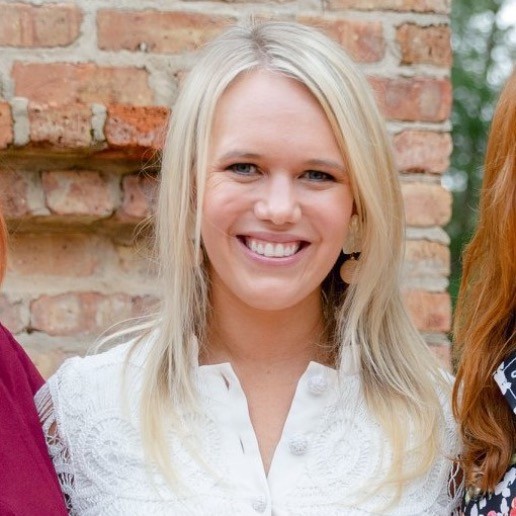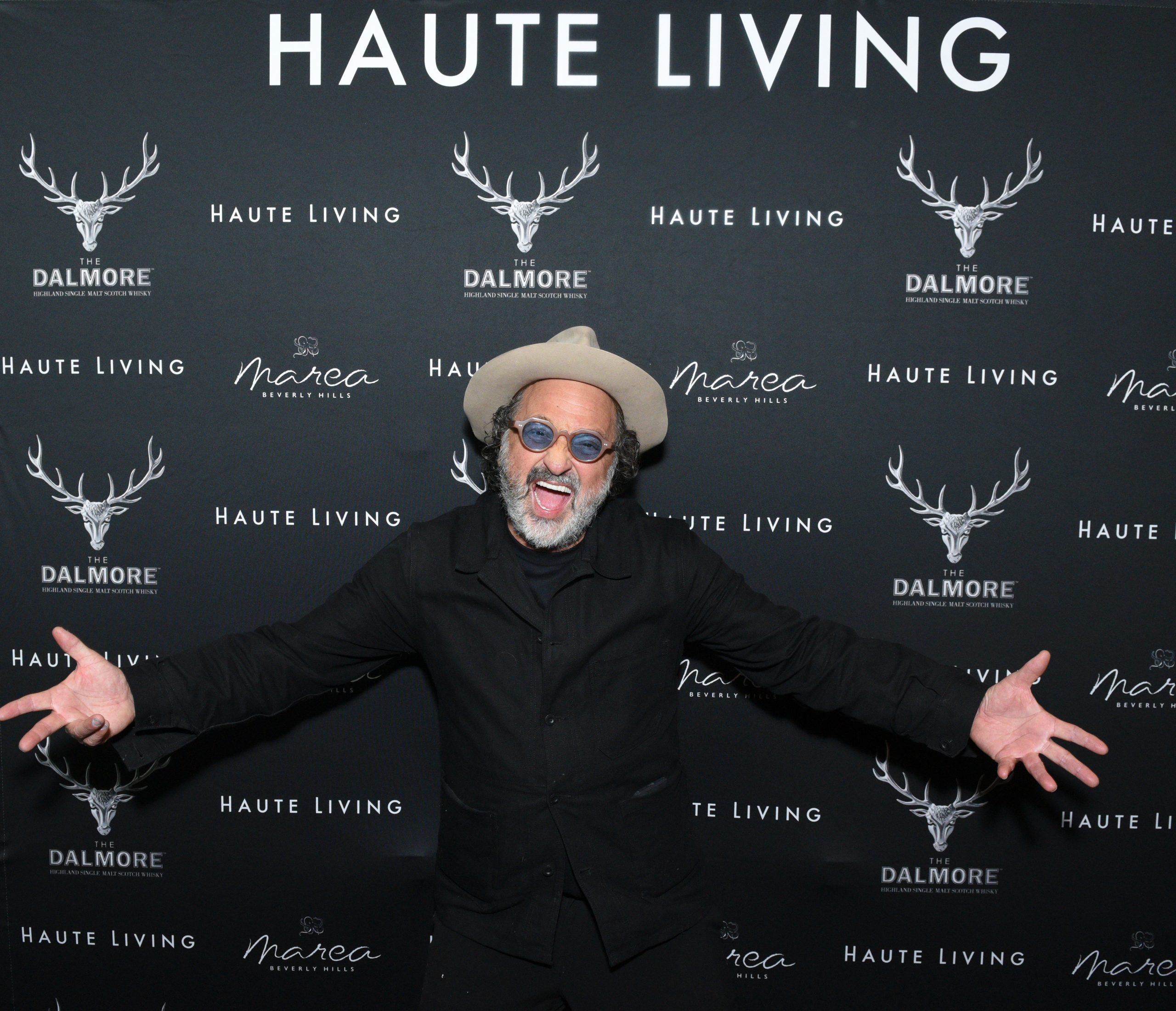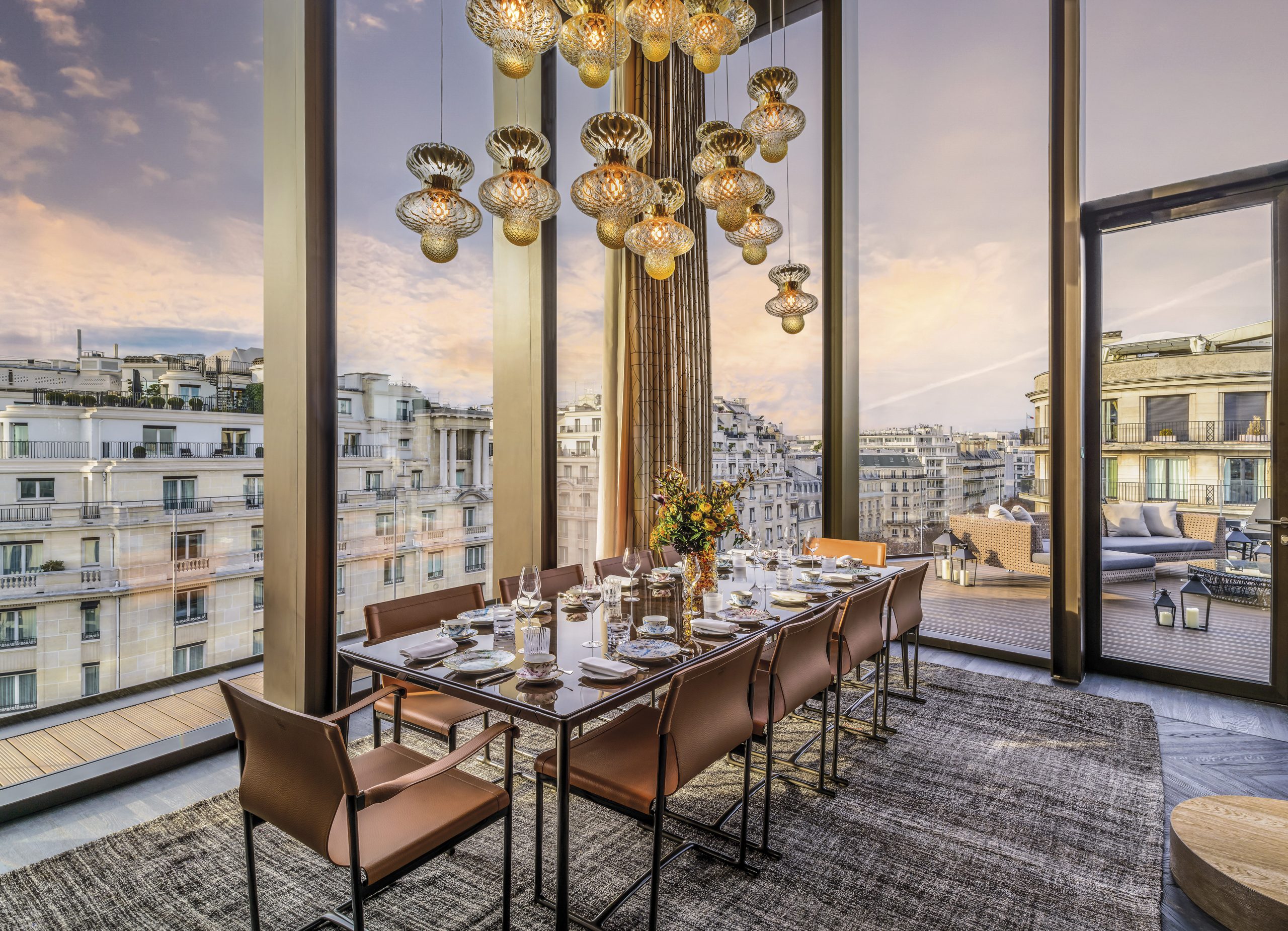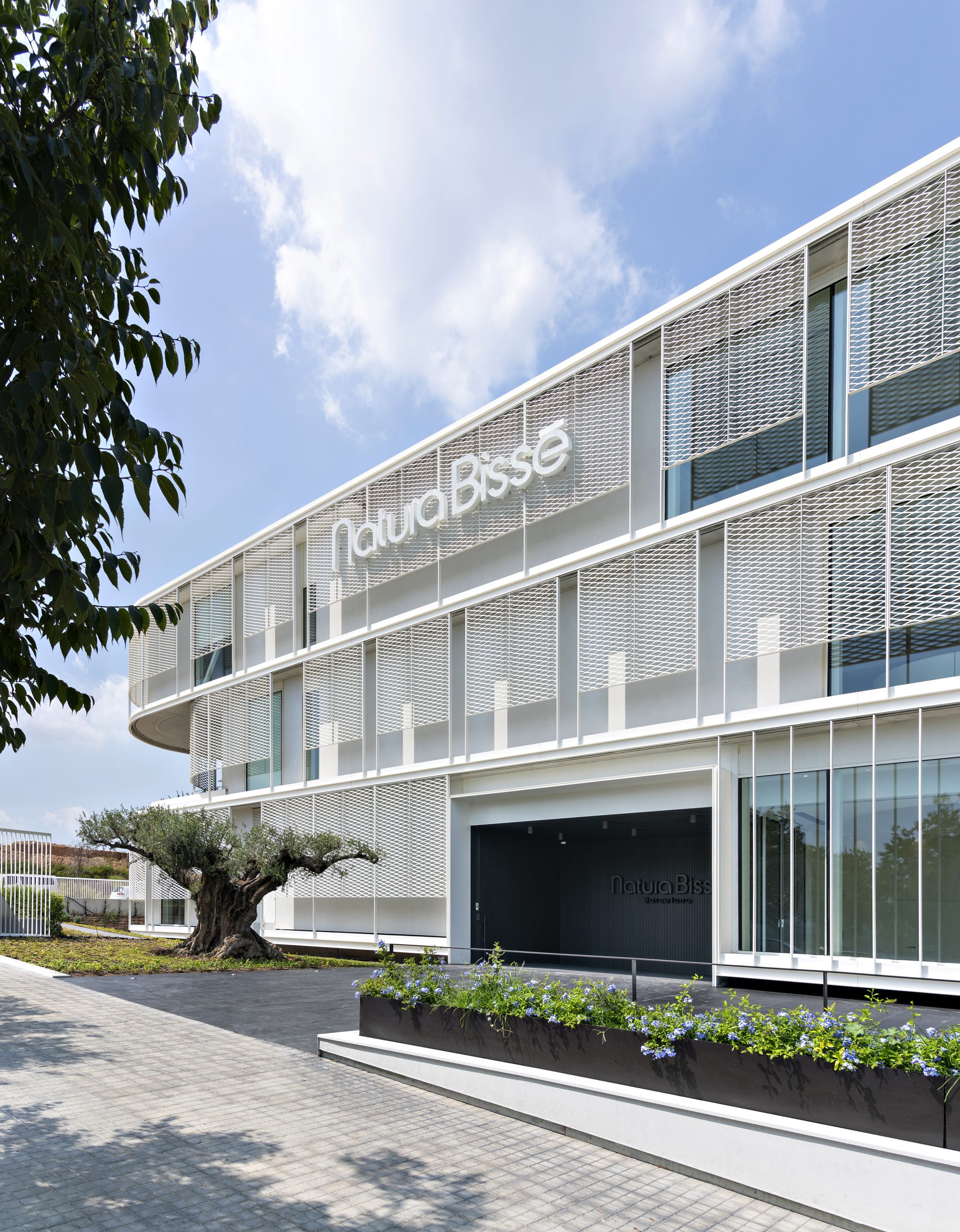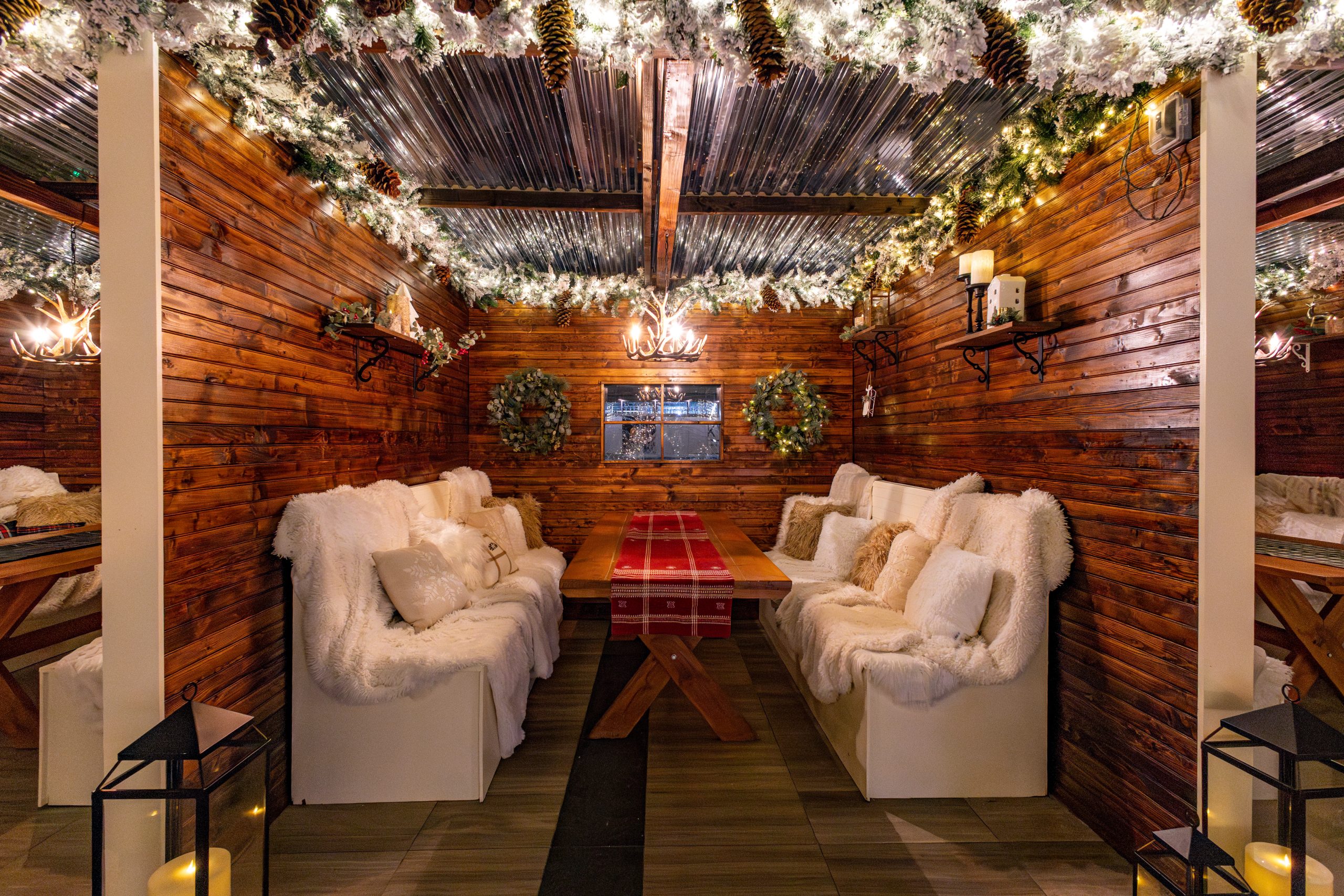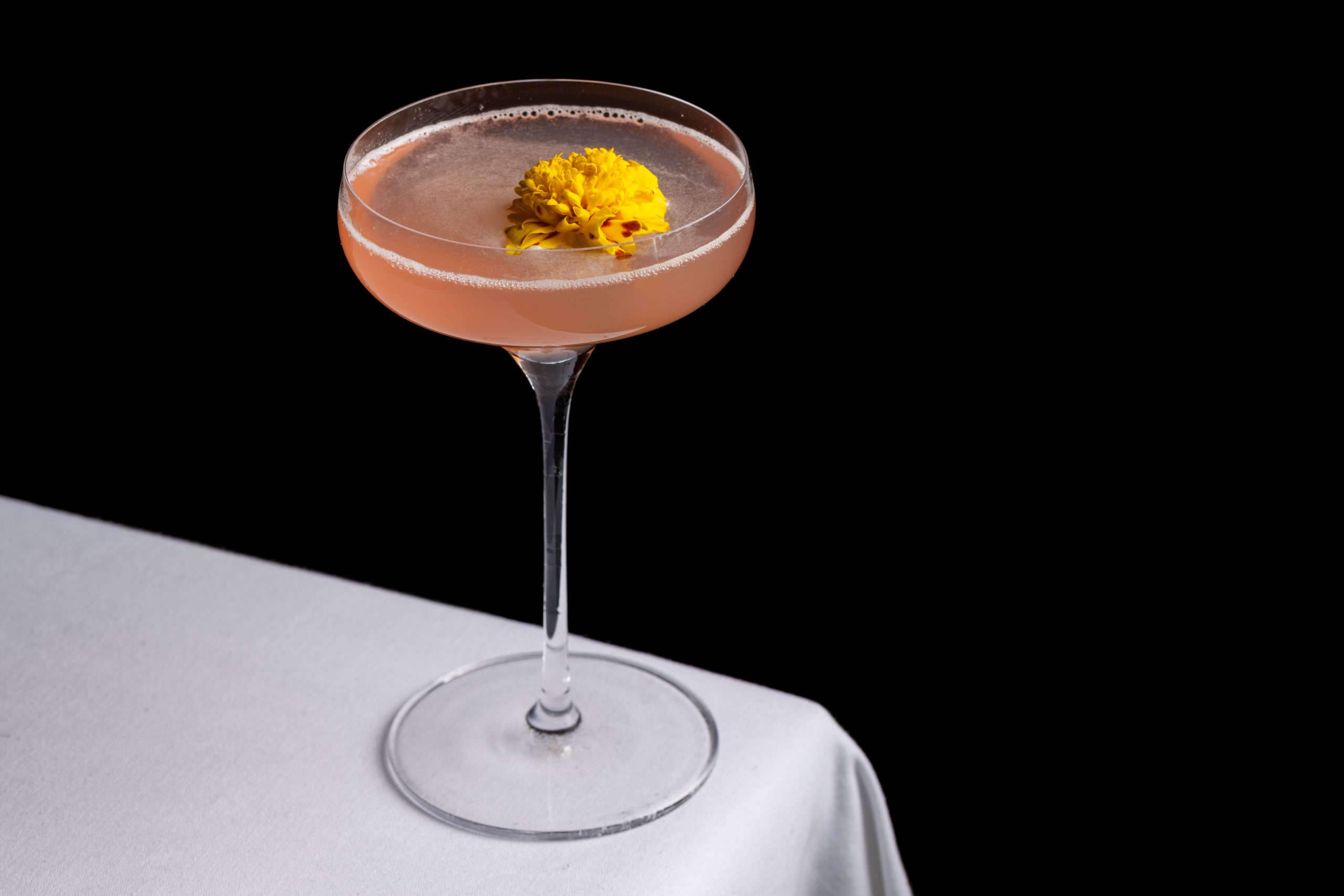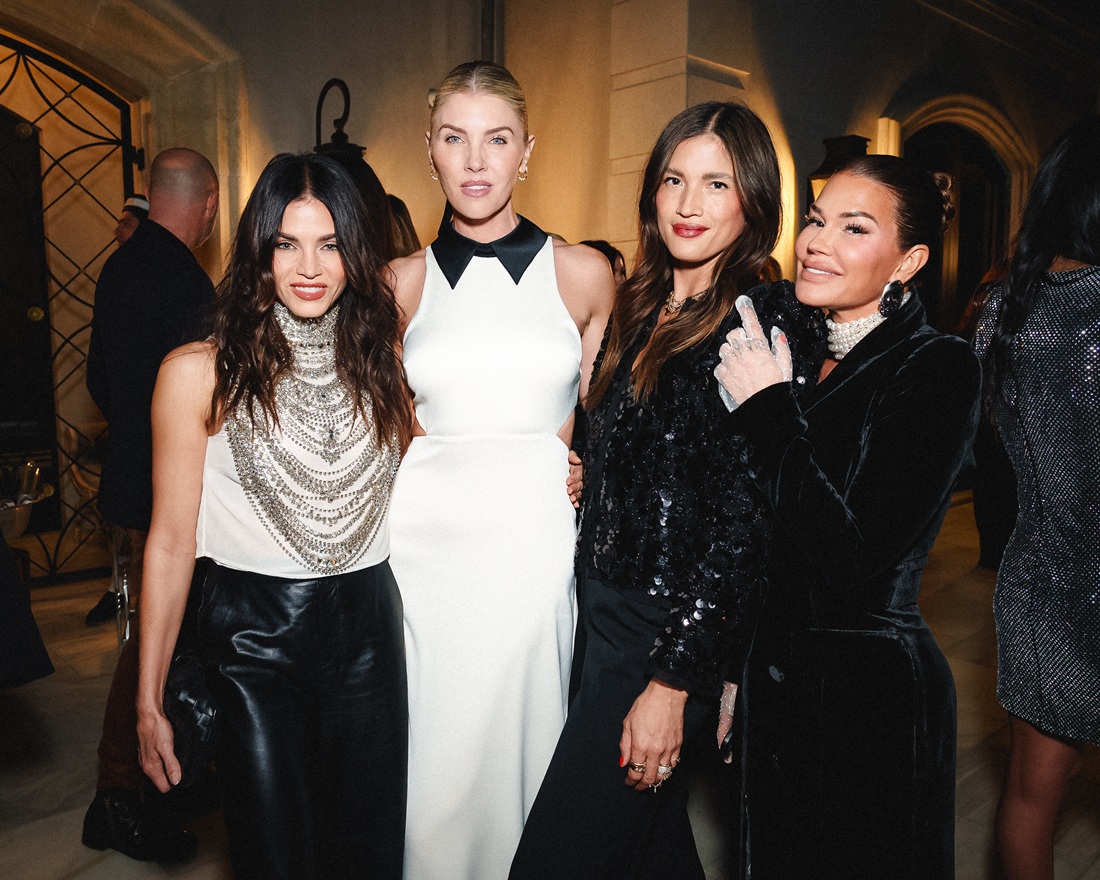The History of Le Colonial and Its Expansion to Naples
Rick Wahlstedt, the professional squash player turned legendary restaurateur and owner and co-founder of iconic Le Colonial, hails from Sweden. He is still an active squash player who competes and is preparing for the World Masters in Amsterdam in August.
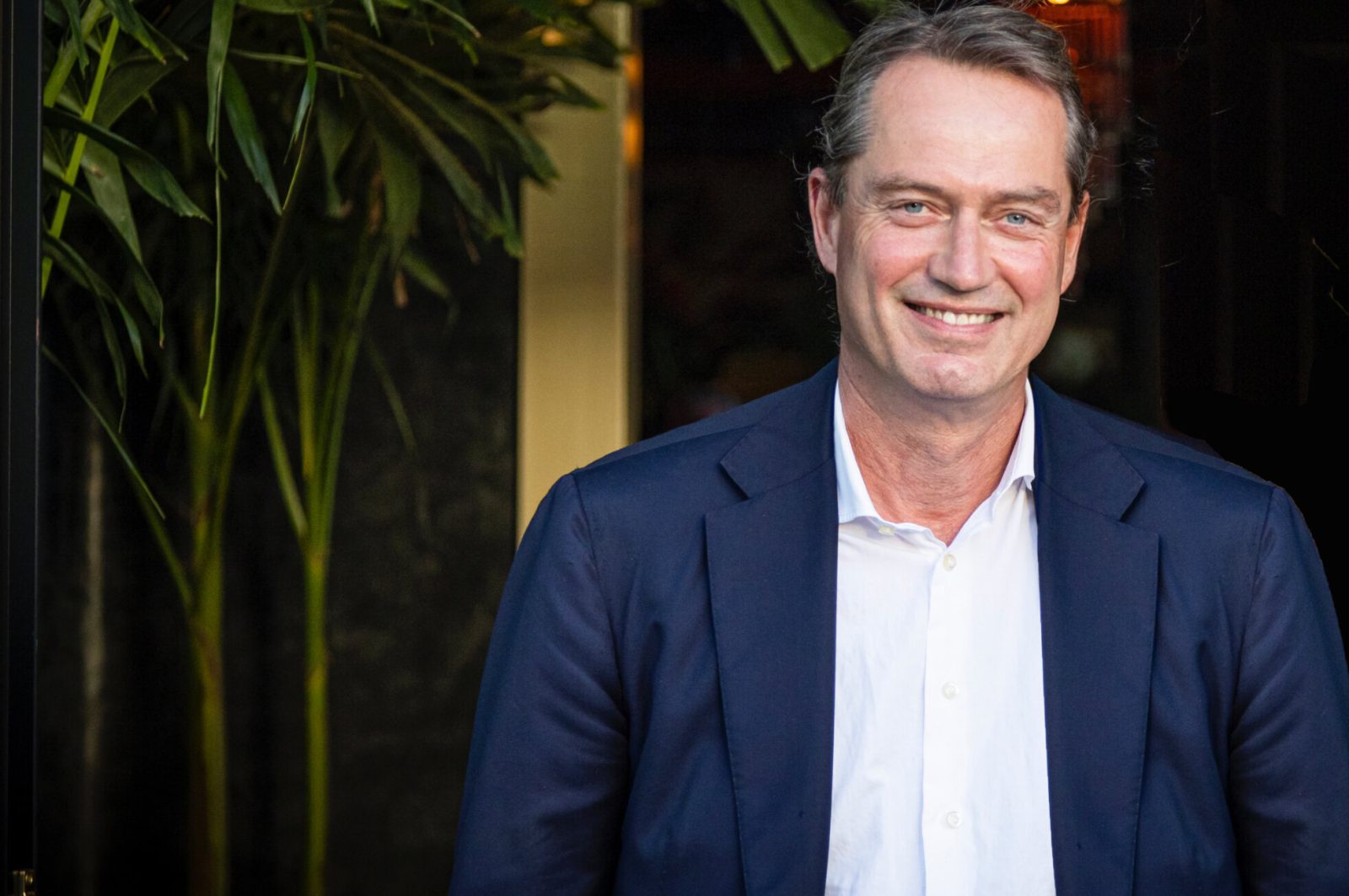 Photo Credit: Courtesy of Le ColonialHaute Living Naples sits down with Rick Wahlstedt to discuss his history in the restaurant industry, the expansion of Le Colonial to Naples, and what it takes to make it as a restaurant entrepreneur.
Photo Credit: Courtesy of Le ColonialHaute Living Naples sits down with Rick Wahlstedt to discuss his history in the restaurant industry, the expansion of Le Colonial to Naples, and what it takes to make it as a restaurant entrepreneur.
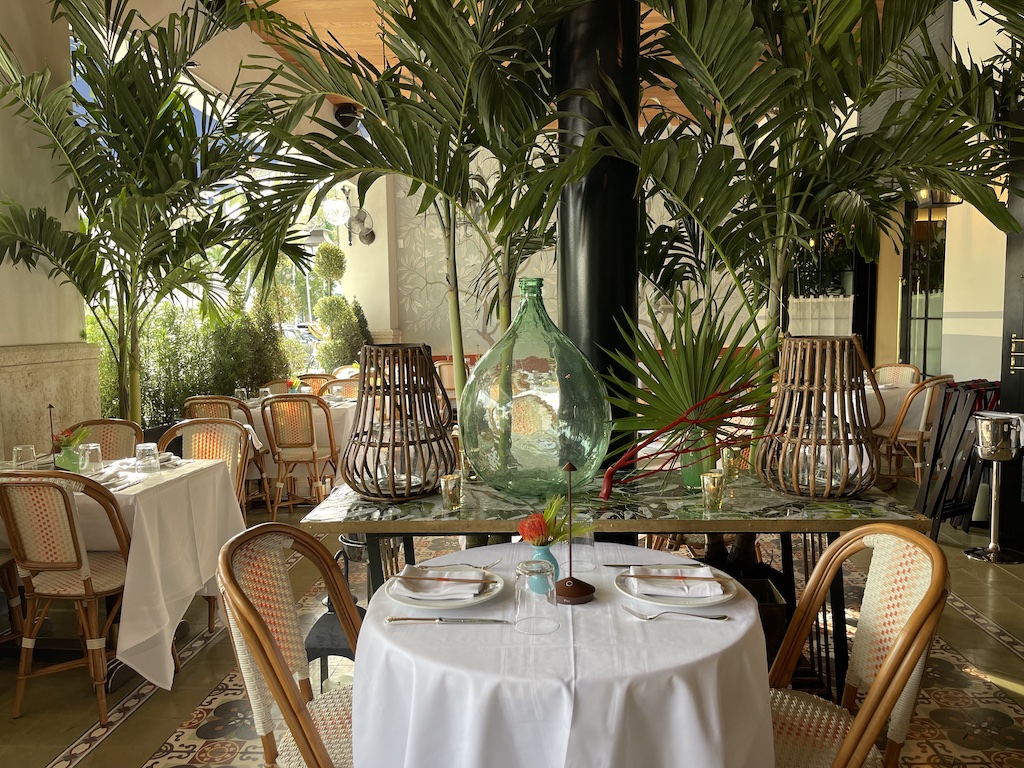 Photo Credit: Courtesy of Le Colonial
Photo Credit: Courtesy of Le Colonial
Haute Living (HL): Why is Le Colonial expanding to Naples?
Rick Wahlstedt (RW): Historically, Naples on the West Coast has been a popular destination for winter escapes, especially for those escaping the harsh Midwest winters. However, following the pandemic, there has been a noticeable shift. Even people from the East Coast are increasingly drawn to Naples, strengthening its market presence. This shift can be attributed in part to a younger clientele moving to the area, like those coming from the East Coast, such as Boston, New York, and Palm Beach.
Le Colonial had already established a presence in Naples indirectly through its longstanding restaurant in Chicago, which has become somewhat of an institution there. Many had asked if we would open on the West Coast, but we were initially cautious about operating seasonal restaurants. Nevertheless, as Florida experienced a rejuvenation during the pandemic, we decided to take a chance. Despite the grim circumstances, Le Colonial managed to fare reasonably well during the pandemic by offering takeout and delivery services, which were new ventures for us.
We pursued location leases, starting with Lake Forest near Chicago, then Delray, and finally Naples. Opting to drive between Naples and Delray rather than fly made logistical sense. We felt a strong connection to Naples even before opening, making the decision straightforward. Fifth Avenue is a beautiful spot, and Naples, with its harmonious community, seemed like a perfect fit. Given the great location, we hope to contribute positively to the community, especially for those unfamiliar with our brand.
Being on Fifth Avenue, you know, it has to offer a complete package, not just a couple of great restaurants. It should include excellent retail, office spaces, and hotels. It’s about creating a comprehensive experience. I believe Naples has evolved positively over the past 10 to 15 years, becoming even better. We’re thrilled about it.
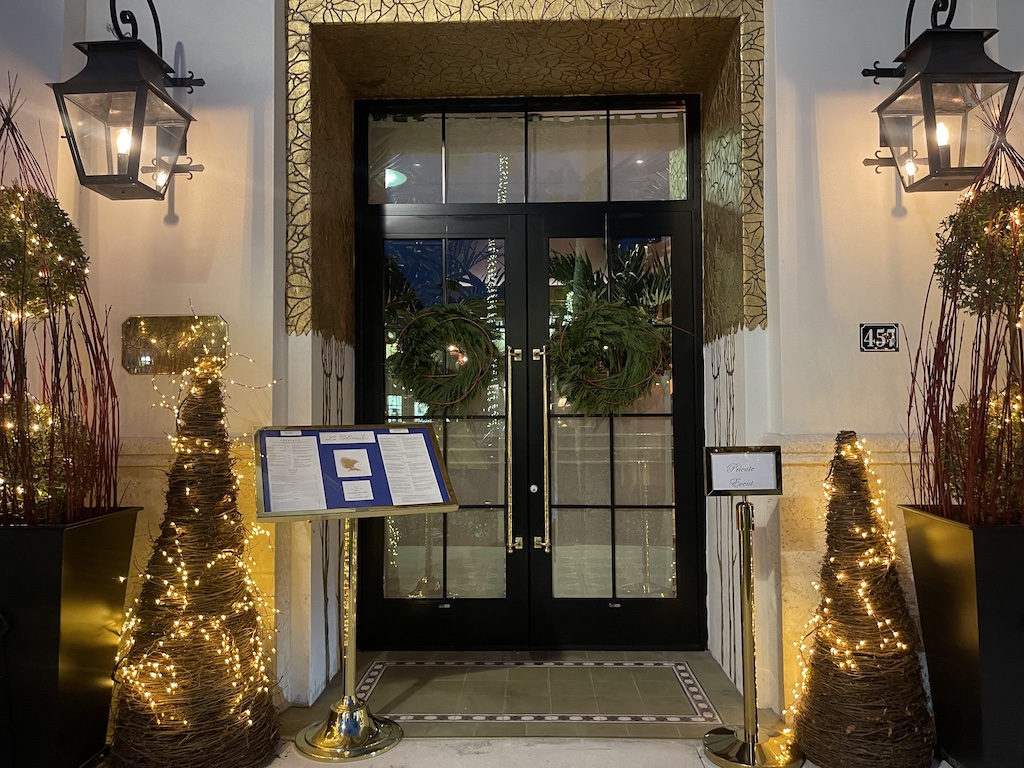 Photo Credit: Courtesy of Le ColonialHL: How did you get your start in the restaurant industry?
Photo Credit: Courtesy of Le ColonialHL: How did you get your start in the restaurant industry?
RW: When I came to New York from Europe, fresh off the boat, it was a thrilling time. Playing squash, participating in tournaments, and working in restaurants at night while practicing during the day filled my schedule. It was a fabulous period in my life.
Keith McNally was a key influencer in my journey. I initially came to New York to play the Chivas Regal Open at the Uptown Racquet Club. I was offered a job as a squash instructor at Uptown, where I met Keith, who was passionate about squash. It was this friendship that eventually led me into the restaurant industry. My first restaurant job was with Keith at The Odeon. I recall he asked me if I knew anything about bartending, to which I truthfully replied that I didn’t. That’s where my journey in the restaurant world truly began. It worked well with squash as I could work at night, practice during the day, and even have weekends off for tournaments.
From there, I worked my way up, bartending, waiting tables, running the kitchen, and eventually becoming a maître d’ at Indochine with Keith’s brother, Brian’s restaurant. This journey led me to become more intrigued by the restaurant business, although I was fired a couple of times for being less than proficient. I never thought I’d make a career out of it until I joined Indochine, where I worked the door and really got a feel for the industry. It opened my eyes, and I started getting involved in the restaurant business on my own. Yet, squash remained a significant part of my life, helping me manage stress in the often-stressful world of restaurants.
One interesting aspect was that the squash community was quite different from the restaurant community. This exposure allowed me to meet a diverse range of people and create friendships across various domains. The restaurant industry introduced me to photographers, models, and more, broadening my horizons. I even dabbled in modeling while simultaneously pursuing squash and the restaurant business. It was a fantastic period of exploration that arose from my involvement in these worlds.
At one point, thanks to connections from squash, I ventured into Wall Street. A fellow professional squash player had a firm called Jonathan Foster & Company, which provided a unique experience. Eventually, I reached a crossroads and had to make a choice. I couldn’t balance Wall Street and the restaurant business anymore, and in 1993, we opened Le Colonial. That was the turning point, and I’ve been on this path ever since, with other restaurant ventures along the way. So, it was a journey that started with squash and led me into the dynamic and diverse world of the restaurant industry.
HL: How did your mentor Keith McNally’s restaurants transform the restaurant scene?
RW: The Odeon significantly transformed the downtown dining scene, specifically in Soho and Tribeca. When The Odeon opened, it played a pivotal role in drawing people to Tribeca, back when it was largely warehouses and not much residential presence. Keith McNally, who’s been in New York for a long time, initially worked at 15 Avenue along with his brother Brian. They helped create a downtown scene, culminating in the opening of The Odeon in Tribeca, which was groundbreaking at the time. This was before I arrived in New York, and they continued to pioneer and expand into different neighborhoods. They had a keen understanding of downtown and garnered a dedicated following, which made a significant impact on the New York restaurant scene, particularly in the 80s and 90s. They redefined what a restaurant meant—it became more than just good food; it was about entertainment, celebrities, bringing together diverse groups, and creating a special ambiance. They attracted top figures from various industries, turning it into a melting pot of interesting people, from famous painters to actors, neighborhood regulars, and more. It was a time when a great restaurant was about the mix of clients, both young and old, from all walks of life, making New York truly unique in those days.
HL: How have you seen the restaurant landscape change?
RW: Back in those days, restaurant success hinged on one crucial element: a review in The New York Times. A negative review from them could spell the end of your business. It wasn’t about social media reviews or individual opinions as it is today; it was The New York Times review that made all the difference. Today, it’s a whole new ball game. With everyone being a reviewer on various platforms, the landscape has dramatically changed. Social media allows people to instantly share their experiences, making it a far cry from the past.
HL: Working at Indochine had a profound impact on you and transformed your course in the restaurant industry? Can you describe this?
RW: You’re absolutely right. It was a game-changer for me, and I think it happened partly because I was a bit older at that time. I had grown up a bit, and this change steered me towards continuing my journey in the restaurant world.
HL: Can you describe the first restaurant you opened?
RW: I ventured into the restaurant world after leaving my military service days behind. My partner at the time, Ulrich Trojaborg, a dancer in the New York City Ballet, shared Danish roots with me, adding a unique connection to our venture. We opened a French-Scandinavian restaurant called Punsch across from Lincoln Center in the late ’80s, which enjoyed success for a few years. However, success was accompanied by its share of mistakes and challenges. After about three years, we had to close the restaurant, and I was devastated. The experience of losing something you’ve poured your heart into is quite different from not having it in the first place. It left a deep impact on me, leading me to step away from the restaurant business.
I believe in learning from one’s mistakes, and this experience was a valuable life lesson. So, I left the restaurant industry and embarked on a new journey on Wall Street. It was a completely different world, and I found myself loving the change.
HL: How did the concept of Le Colonial form?
RW: During my time on Wall Street, an old friend from the restaurant business, acclaimed restaurateur Jean Denoyer, approached me, suggesting we collaborate on something new. I agreed, but with one condition: I wanted to create a concept that could potentially expand beyond New York if it proved successful, an unusual approach at the time. I didn’t want to limit myself to just one location. I wanted to embrace the industry I loved and create an experience around cuisine that could potentially grow. This was when the idea of a Vietnamese restaurant started taking shape. We found the perfect location on 57th Street, and that’s when my journey into this concept truly began.
The concept drew inspiration from the architectural and cultural elements of 1920s French colonial Vietnam, as well as influences from movies like Indochine. The talented late designer Greg Jordan, who hailed from New Orleans, also added his touch to the concept. This fusion of ideas and influences created a romantic and timeless ambiance that has stood the test of time.
The French Quarter in New Orleans and Greg’s favorite restaurant, Galatoire’s, played a role in shaping the design. We aimed to capture the essence of these influences, especially in the front room. The design was aimed at transporting our guests to a different time and place, making them feel warm and romantic, even on a cold, snowy day. This design concept has proven to be enduring, as we’ve been in business for over 30 years. It’s a testament to the power of creating an immersive dining experience that resonates with our patrons.
 Photo Credit: Courtesy of Le Colonial
Photo Credit: Courtesy of Le Colonial
HL: How has Le Colonial transformed since its opening in 1993?
RW: When we opened in Houston in River Oaks, we redid the entire restaurant’s design, as well as the culinary inspiration, creating an experience, a culinary theater, and an environment where people can immerse themselves.
I wanted to do something different, and the opportunity at River Oaks came, and it seemed perfect for Le Colonial. However, I didn’t want to repeat the same thing. I aimed to change it and really brighten it up, make it less heavy, and bring in more light than what we were used to in New York and Chicago. We brought in our new designer, Mark Knauer of Knauer Inc., and we kept the bones of Le Colonial, but significantly elevated the game, both in terms of design and culinary aspects, focusing on Vietnamese cuisine.
My business partner of 30 years, Joe King, and I work very well with Mark Knauer, who is easy to work with, and he brings a fresh feel to our projects.
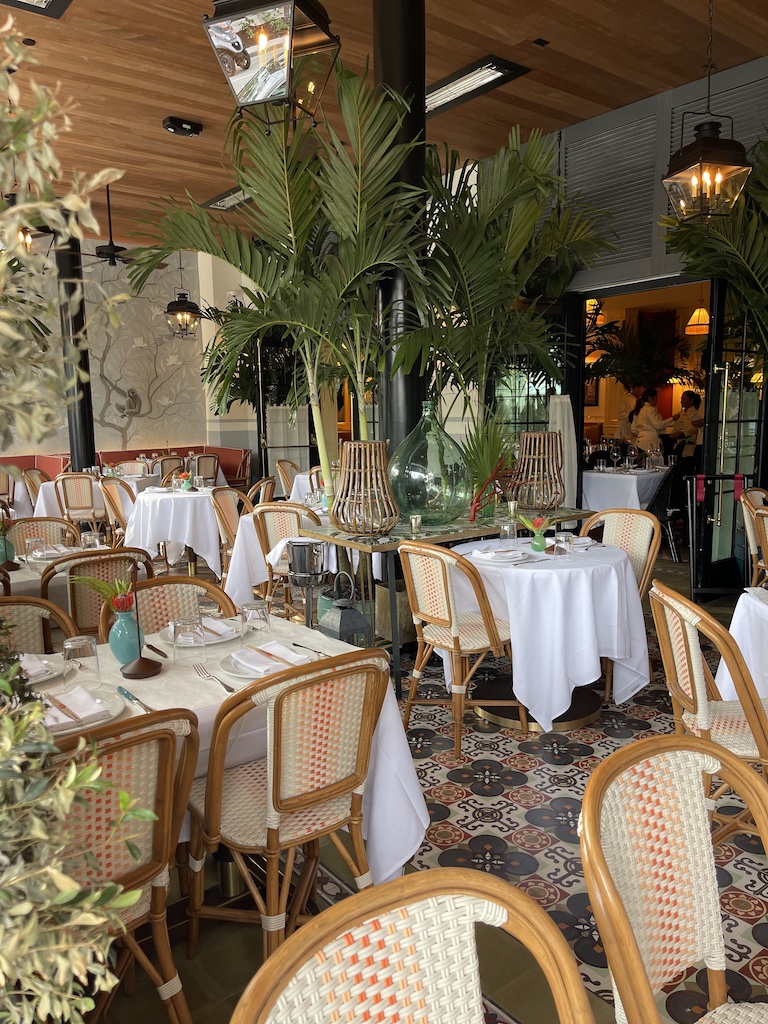 Photo Credit: Courtesy of Le Colonial
Photo Credit: Courtesy of Le Colonial
HL: Can you describe the transformation of the Le Colonial culinary menu since 1993?
RW: Vietnamese cuisine is relatively limited compared to Chinese, for instance. You go to a Chinese restaurant, and you get menus six pages long, right? You have Cantonese, Szechuan, Beijing, Mandarin, and numerous other regional varieties. Vietnamese cuisine, on the other hand, is straightforward, essentially a national cuisine with some differences between the North and the South. So, I felt the cuisine needed authenticity, which we’ve always maintained on the Vietnamese side and still do. But we branched out a little, incorporating influences from Cambodia and Malaysia, among others. This made the menu more interesting, especially for patrons who visit two or three times a week, which we have many.
That’s the path we’ve been on since then, expanding to Atlanta after Houston. Then, we moved from Rush Street to Oak Street in Chicago, doubling our volume, followed by Lake Forest and now Florida. We’re also starting construction in Denver, Colorado this January.
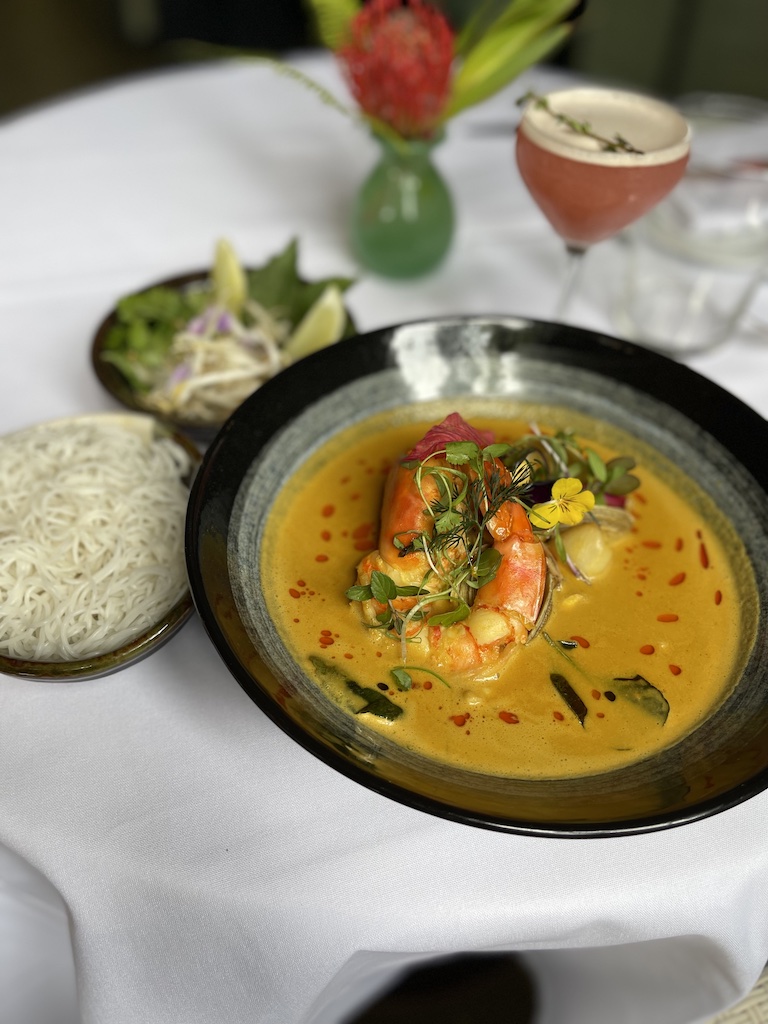 Photo Credit: Courtesy of Le Colonial
Photo Credit: Courtesy of Le Colonial
HL: What are some successful lessons you’ve learned from Le Colonial throughout the years?
RW: The success in Houston really catapulted the new Le Colonial. What I’m trying to say is that you still need to push forward. Even if you have a full room, it doesn’t necessarily mean it’s the best it can be. You have to keep evolving, or you get left behind and become outdated, which we’re trying to avoid at all costs. So, innovating and being forward-thinking has always been our approach.
HL: Can you describe your approach for expansion?
RW: In the 80s and 90s, expanding was not commonly thought of. Many who tried usually failed, to tell you the truth. It wasn’t the right time. Back then, there were only a few cities in this country where you could succeed with a concept like Le Colonial. The demand and price points elsewhere didn’t match. So, New York, Chicago, and LA were viable, but not places like San Diego or Boston. Today, however, the landscape has changed. I prefer not to enter prime markets like New York, Chicago, or LA, or even European cities like Paris or London.
Instead, I focus on slightly secondary markets, where you can make a more significant impact and become more integrated into the community. Nowadays, you can open a great restaurant almost anywhere in America, and it will be appreciated. This shift is largely due to the internet, the quest for better products, and increased knowledge among consumers.
It’s actually easier today to expand restaurants, or even hotels, than it was back then. You don’t have to be confined to a single city. For example, Keith McNally has expanded to multiple locations in New York, but it took him about 30 years to open his first restaurant outside of New York, which I believe was in London, his hometown.
HL: How do you choose your locations for Le Colonial?
RW: It’s sort of a gut feeling about what’s right and wrong for what we do. And so, it’s not a science-based decision about where to go and how to do it; it’s more of a gut feeling about which markets to enter and which ones not to pursue for various developments. We usually work directly with a developer, whether it’s a hotel owner or a mixed-use retail developer, or a landlord in general. They usually come to us and present us with an opportunity. We don’t try to force a square peg into a round hole. And I guess that’s the question, right? To do what feels natural. And I guess, over the years, with 35 years in the industry, you develop some gut feelings about what to do and what not to do.

HL: How will Le Colonial in Naples differ from other locations?
RW: In Naples, we aim to make Le Colonial unique, offering dishes and cocktails that are tailored to the local taste. While a significant portion of the menu features our classic dishes, around 30% of our menu will showcase new, region-specific creations, particularly focusing on seafood due to the Gulf of Mexico’s influence. Expect dishes like a fantastic branzino and a lemongrass steak that’s sliced thinly and incredibly delicious. Our goal is to make each Le Colonial location one-of-a-kind, respecting the local community and its preferences. Our Naples menu will reflect Florida’s love for fresh seafood, with some unique additions.
Vietnamese cuisine is naturally healthy and light, which resonates with the current health-consciousness trend. We’re working with local farms to source high-quality ingredients, be it meat, chicken, or vegetables, and pushing the boundaries of freshness and quality. We’re confident this approach will resonate with diners, especially in Florida.
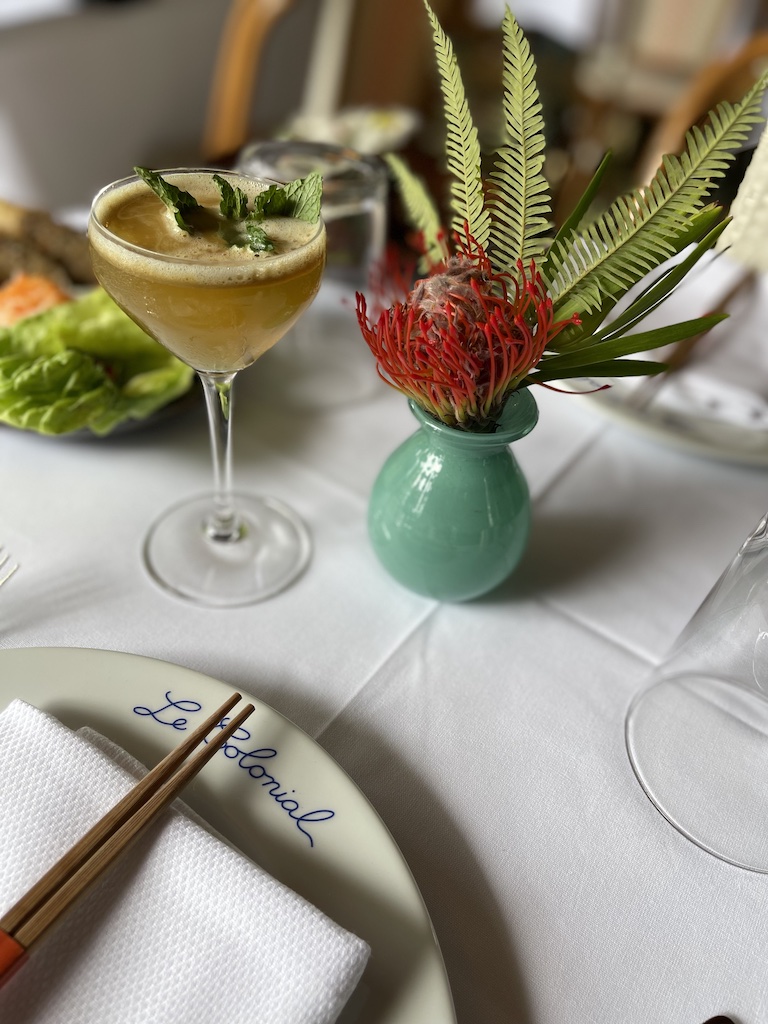 Photo Credit: Courtesy of Le Colonial
Photo Credit: Courtesy of Le Colonial
HL: Can you describe Le Colonial’s cocktail program collaboration with Employees Only?
RW: It’s quite special since I have a history with Employees Only’s owner, Bill Gilroy. We were roommates back in the day and started our bartending careers together in 1986. It’s remarkable how paths reconnect over time. This collaboration aims to bring something distinct to Naples.
With our collaboration with Employees Only, we’re striving to create something unique and fast to prepare. Personally, I’m more inclined towards classic cocktails and not too sweet. One cocktail I’d recommend is the “Old Cuban” made with rum, champagne, and bitters, providing a fresh cocktail. It’s a fantastic choice. Additionally, we have a “Lychee Martini” on the menu, which is wonderful, and I believe everyone will enjoy our entire selection. Employees Only is renowned worldwide for their cocktail expertise. They even participate in global competitions, showcasing their skills. Collaborating with them to create something unique for Le Colonial is an exciting opportunity.
HL: Will there be a happy hour at Le Colonial?
RW: Yes, we will host a “Saigon Social” during those hours, typically from 3 pm to 5 pm. The dining room opens at 4 pm because Naples’ diners prefer to eat early. Our hope is to bring a bit of late-night culture to Naples as well, catering to a younger crowd looking for late-night lounges.
 Photo Credit: Courtesy of Le Colonial
Photo Credit: Courtesy of Le Colonial
HL: Are there any unique design details for Naples?
RW: Absolutely, we pay great attention to the details in our design, involving skilled artists from Europe, including Russia and Sweden, to create unique murals and paintings in the Naples location. Our aim is to set our restaurants apart in terms of design and ambiance.
 Photo Credit: Courtesy of Le Colonial
Photo Credit: Courtesy of Le Colonial
HL: What advice do you have for restaurant entrepreneurs?
RW: We all make mistakes, and we try not to make the same mistakes twice. In fine dining, I believe it’s important to “walk before you run.” My other advice is to do one thing and do it really well, putting 110% of the focus into whatever that is.
I often speak to young entrepreneurs, and when they’re talking about doing a new restaurant or a new concept, it’s not about doing one; it’s about what they’re going to do when they have 100 of them. They jump too far, too quickly. So, my advice is to walk before you run. Succeed and put all your effort and passion into your first concept, and don’t worry about whether you are going to go public or you’re going to have 100 of them.
Le Colonial opens Thursday, December 14 at 4pm on 5th Ave South.
457 5th Ave S, Naples, FL 34102

